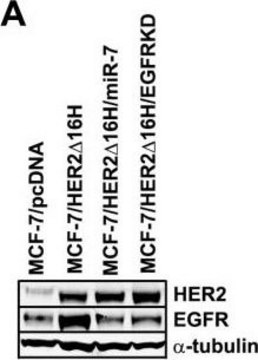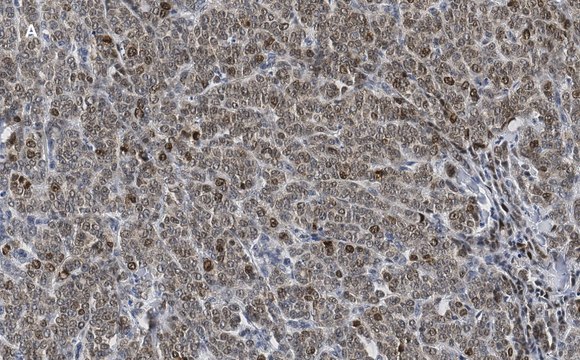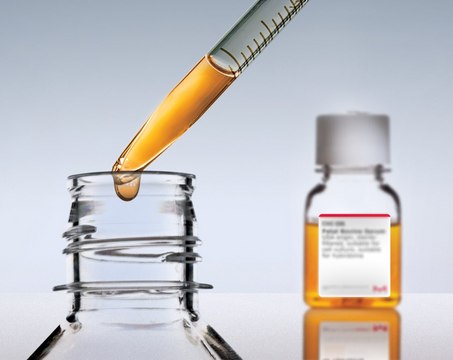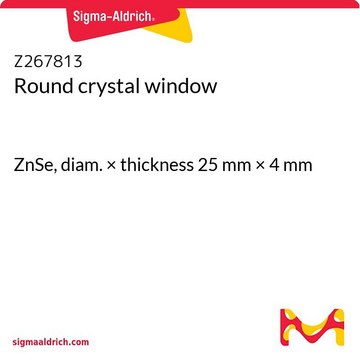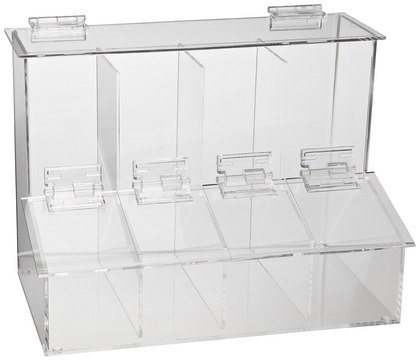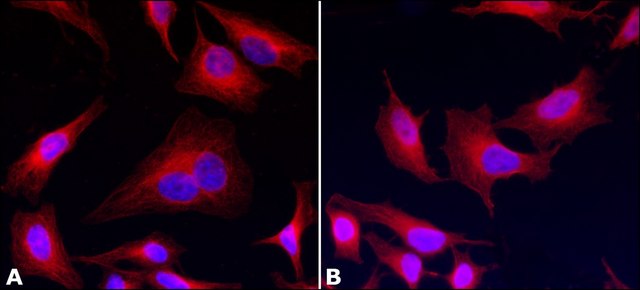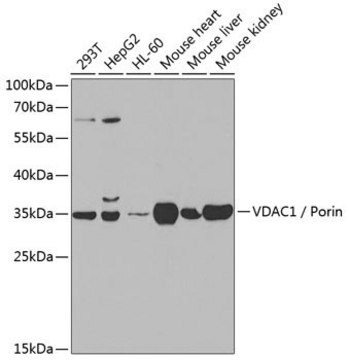一般描述
We are committed to bringing you greener alternative products, which adhere to one or more of The 12 Principles of Green Chemistry.This antibody is Preservative-free, produced without the harm or sacrifice of animals and exceptionally stable to allow for ambient shipping and storage if needed and thus aligns with "Waste Prevention", "Designing Safer Chemicals" and "Design for Energy Efficiency".
Click here for more information.
ZooMAb antibodies represent an entirely new generation of recombinant monoclonal antibodies.
Each ZooMAb antibody is manufactured using our proprietary recombinant expression system, purified to homogeneity, and precisely dispensed to produce robust and highly reproducible lot-to-lot consistency. Only top-performing clones are released for use by researchers. Each antibody is validated for high specificity and affinity across multiple applications, including its most commonly used application. ZooMAb antibodies are reliably available and ready to ship when you need them.
Learn more about ZooMAb here.特异性
Clone 1J11 is a ZooMAb rabbit recombinant monoclonal antibody that specifically detects Smad3. It targets an epitope with in 15 amino acids from the N-terminal region.
免疫原
KLH-conjugated linear peptide corresponding to 15 amino acids from the N-terminal region of human Smad3.
应用
Anti-Smad3, clone 1J11 ZooMAb, Cat. No. ZRB1005, is a recombinant Rabbit Monoclonal Antibody that specifically targets Smad3 and has been tested for use in Immunocytochemistry, Immunohistochemistry (Paraffin), and Western Blotting.
Western Blotting Analysis: A 1:1,000 dilution from a representative lot detected Smad3 in NIH3T3 and HEK293 cell lysate.
Immunohistochemistry (Paraffin) Analysis: A 1:1,000 dilution from a representative lot detected Smad3 in human kidney and mouse colon tissue sections.
Immunocytochemistry Analysis: A 1:5,000 dilution from a representative lot detected Smad3 in HT1080 cells.
目标描述
Mothers against decapentaplegic homolog 3 (UniProt: P84022; also known as MAD homolog 3, Mad3, Mothers against DPP homolog 3, hMAD-3, JV15-2, SMAD family member 3, SMAD 3, Smad3, hSMAD3) is encoded by the SMAD3 (also known as MADH3) gene (Gene ID: 4088) in human. Smad3 is a receptor-regulated SMAD (R-SMAD) that serves as an intracellular signal transducer and transcriptional modulator activated by TGF-beta and activin type 1 receptor kinases. It binds the TRE element in the promoter region of many genes that are regulated by TGF-beta. In the absence of TGF-beta it is mainly cytoplasmic and with TGF-beta stimulation it translocates to the nucleus in complex with Smad4. In the absence of TGF-beta it is present in a monomeric form and homooligomerizes in the presence of TGF-beta. It can also form a heterotrimer with Smad2 or Smad4 upon C-terminally phosphorylated Smad2 or Smad4. Smad3 is phosphorylated on threonine 179 and serine 204 and 208 on EGF and TGF-beta treatment. Serine 208 is shown to be the main site of MAPK-mediated phosphorylation. Smad3 is also phosphorylated on serine residues in the C-terminal SXS motif by TGFBR1 and ACVR1. TGFBR1-mediated phosphorylation at these C-terminal sites is required for its interaction with SMAD4, nuclear location, and transactivational activity. Through the action of the phosphatase PPM1A, Smad3 is released from the Smad2 or Smad4 complex, and exported out of the nucleus by interaction with RANBP1. This ZooMAb recombinant monoclonal antibody, generated by our propriety technology, offers significantly enhanced specificity, affinity, reproducibility, and stability over conventional monoclonals.
外形
Purified recombinant rabbit monoclonal antibody IgG, lyophilized in PBS with 5% Trehalose, normal appearance a coarse or translucent resin. Contains no biocide or preservatives, such as azide, or any animal by-products. Larger pack sizes provided as multiples of 25 μL.
重悬
300 μg/mL after reconstitution at 25 μL. Please refer to guidance on suggested starting dilutions and/or titers per application and sample type.
储存及稳定性
Recommend storage of lyophilized product at 2-8°C; Before reconstitution, micro-centrifuge vials briefly to spin down material to bottom of the vial; Reconstitute each vial by adding 25 μL of filtered lab grade water or PBS; Reconstituted antibodies can be stored at 2-8°C, or -20°C for long term storage. Avoid repeated freeze-thaws.
法律信息
ZooMAb is a registered trademark of Merck KGaA, Darmstadt, Germany
免责声明
Unless otherwise stated in our catalog or other company documentation accompanying the product(s), our products are intended for research use only and are not to be used for any other purpose, which includes but is not limited to, unauthorized commercial uses, in vitro diagnostic uses, ex vivo or in vivo therapeutic uses or any type of consumption or application to humans or animals.

